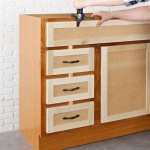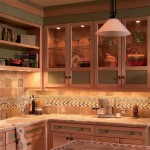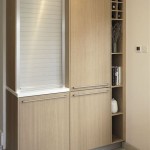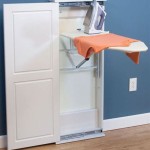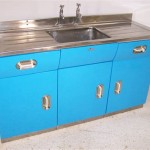Jack Stands: A Practical Tool for Kitchen Cabinet Installation
Installing kitchen cabinets is a significant undertaking that demands precision, patience, and the right tools. While various specialized tools are readily available, a seemingly unconventional yet surprisingly effective tool for this task is the jack stand. Commonly associated with automotive repair, jack stands offer a stable and adjustable support system that can significantly simplify and improve the accuracy of cabinet installation. This article will explore the advantages of using jack stands when installing kitchen cabinets, providing insights into how they can contribute to a professional and efficient installation process.
The core function of jack stands is to provide a secure and level platform for supporting heavy objects. In the context of kitchen cabinet installation, this translates to assisting in the positioning, leveling, and securing of cabinets, particularly upper cabinets. Unlike relying solely on human strength or improvised supports, jack stands offer a readily adjustable and consistently stable solution, allowing for fine-tuning and adjustments without the risk of the cabinet shifting or falling. This is especially crucial when working alone or when dealing with large and heavy cabinet units.
Enhanced Stability and Precision
One of the primary benefits of utilizing jack stands during kitchen cabinet installation is the enhanced stability they provide. Cabinets, especially upper cabinets, can be heavy and awkward to handle. Maintaining a perfectly level position while simultaneously attaching them to the wall can be challenging, often requiring multiple individuals. Jack stands alleviate this burden by providing a solid, unwavering foundation. This allows the installer to focus on accurate alignment and secure fastening without the constant struggle to keep the cabinet from shifting or sagging.
The adjustable height feature of jack stands is equally important. Kitchens often present uneven floors or ceilings, requiring cabinets to be precisely leveled to ensure a professional and aesthetically pleasing finish. Jack stands allow for incremental height adjustments, enabling the installer to achieve a perfectly level position without resorting to shims or other makeshift solutions. This precision is particularly crucial when installing a series of cabinets, as even slight variations in level can accumulate and create noticeable discrepancies across the entire run. The ability to easily raise or lower a cabinet by small increments significantly streamlines the leveling process, leading to a more accurate and visually appealing outcome.
Furthermore, the stability provided by jack stands reduces the risk of damaging the cabinets themselves. When cabinets are unsupported or improperly stabilized, they are more susceptible to scratches, dents, and other forms of damage during handling and installation. By providing a secure and controlled support system, jack stands minimize the potential for accidental bumps or drops that could mar the cabinet's finish or compromise its structural integrity. This is particularly important when working with expensive or custom-made cabinets, where even minor damage can be costly to repair.
To effectively utilize jack stands for stability, it is important to select stands with an appropriate weight capacity for the cabinets being installed. Overloading the stands can compromise their stability and create a safety hazard. It is also crucial to ensure that the stands are placed on a solid and level surface to prevent them from tipping or shifting during the installation process. Using a level to verify the stability of the stands before positioning the cabinets is a recommended practice.
Facilitating Solo Installation
Kitchen cabinet installation is often considered a two-person job, particularly when it comes to upper cabinets. However, with the aid of jack stands, it becomes significantly more feasible for a single individual to complete the installation process. The ability to securely support a cabinet in place while making adjustments and securing it to the wall frees up the installer from the constant need for assistance. This not only saves time and money but also provides greater flexibility and control over the installation process.
The adjustable height feature of jack stands is particularly beneficial for solo installations. The installer can gradually raise the cabinet into position, making incremental adjustments as needed to achieve the desired level and alignment. This eliminates the need to lift the entire weight of the cabinet at once, reducing strain and the risk of injury. Once the cabinet is in the correct position, the jack stands provide a stable platform that allows the installer to focus on securing it to the wall without having to simultaneously support its weight. This is especially helpful when working with heavier cabinets or in tight spaces where maneuvering can be challenging.
For solo installation, proper planning and preparation are crucial. Before beginning the installation, it is important to carefully measure and mark the locations of the cabinets on the wall. This will help ensure accurate placement and alignment. It is also recommended to pre-drill pilot holes in the wall studs to facilitate easy and secure fastening. Having all necessary tools and materials readily accessible will further streamline the installation process and minimize the need to repeatedly reposition the cabinet.
While jack stands can greatly simplify solo cabinet installation, it is important to exercise caution and prioritize safety. Always wear appropriate safety gear, such as gloves and eye protection. Avoid overloading the jack stands and ensure that they are placed on a stable surface. If the cabinet is particularly heavy or unwieldy, it may be advisable to seek assistance from another individual, even with the use of jack stands. The goal is to complete the installation safely and efficiently, without compromising the quality of the work.
Protecting Existing Surfaces
Beyond providing stability and facilitating solo installation, jack stands can also play a crucial role in protecting existing surfaces during kitchen cabinet installation. Moving and positioning heavy cabinets can easily lead to scratches, dents, or other damage to floors, walls, and countertops. By elevating the cabinets and providing a controlled means of maneuvering them, jack stands help minimize the risk of accidental contact and impact.
When using jack stands, it is important to protect the feet of the stands themselves to prevent them from scratching or marring the floor. This can be accomplished by placing protective pads or cloths beneath the stands. Similarly, it is advisable to protect the edges and corners of the cabinets with padding or tape to prevent them from scratching the walls or other cabinets during installation. These simple precautions can go a long way in preserving the integrity of the existing surfaces and ensuring a clean and professional-looking installation.
In addition to protecting the floor and walls, jack stands can also be used to protect countertops. When installing upper cabinets, it is often necessary to position them directly above the countertop. Without proper precautions, the weight of the cabinets can easily damage the countertop surface. By using jack stands to support the cabinets at a safe distance above the countertop, the installer can prevent any direct contact and minimize the risk of damage. This is particularly important when working with delicate or expensive countertop materials, such as granite or marble.
Furthermore, the use of jack stands can help prevent back strain and other injuries associated with lifting and carrying heavy objects. By elevating the cabinets to a more ergonomic working height, the installer can avoid bending over or reaching excessively, reducing strain on the back and other muscles. This is particularly important when installing multiple cabinets over an extended period of time. The use of jack stands helps to promote a safer and more comfortable working environment, leading to improved productivity and reduced risk of injury. It is important to remember to maintain proper posture and use proper lifting techniques, even when using jack stands, to further minimize the risk of strain and injury.
In conclusion, the strategic application of jack stands transcends their traditional automotive function, proving to be a valuable asset in kitchen cabinet installation. Their capacity to provide enhanced stability, facilitate solo installation, and safeguard existing surfaces positions them as a practical and efficient tool for achieving a professional and aesthetically pleasing result. The adaptability and precision offered by jack stands contribute to streamlining the installation procedure, reducing potential damage, and enhancing overall project success.

Cabinet Jacks Installation Support Stand The In

Super Wicked Awesome Cabinet Jacks Thisiscarpentry

How To Install Hang Cabinets By Yourself Using The Stand In

Super Wicked Awesome Cabinet Jacks Thisiscarpentry

Best Cabinet Jack On In 2024 Tested Guide

3 H Little Hand Leveler Richelieu Hardware

Super Wicked Awesome Cabinet Jacks Thisiscarpentry

10 Best Cabinet Jack Reviews In 2024 Electronicshub

How To Install Upper Cabinets Like A Pro Cabinetselect Com

Best Cabinet Jack On In 2024 Tested Guide
Related Posts

